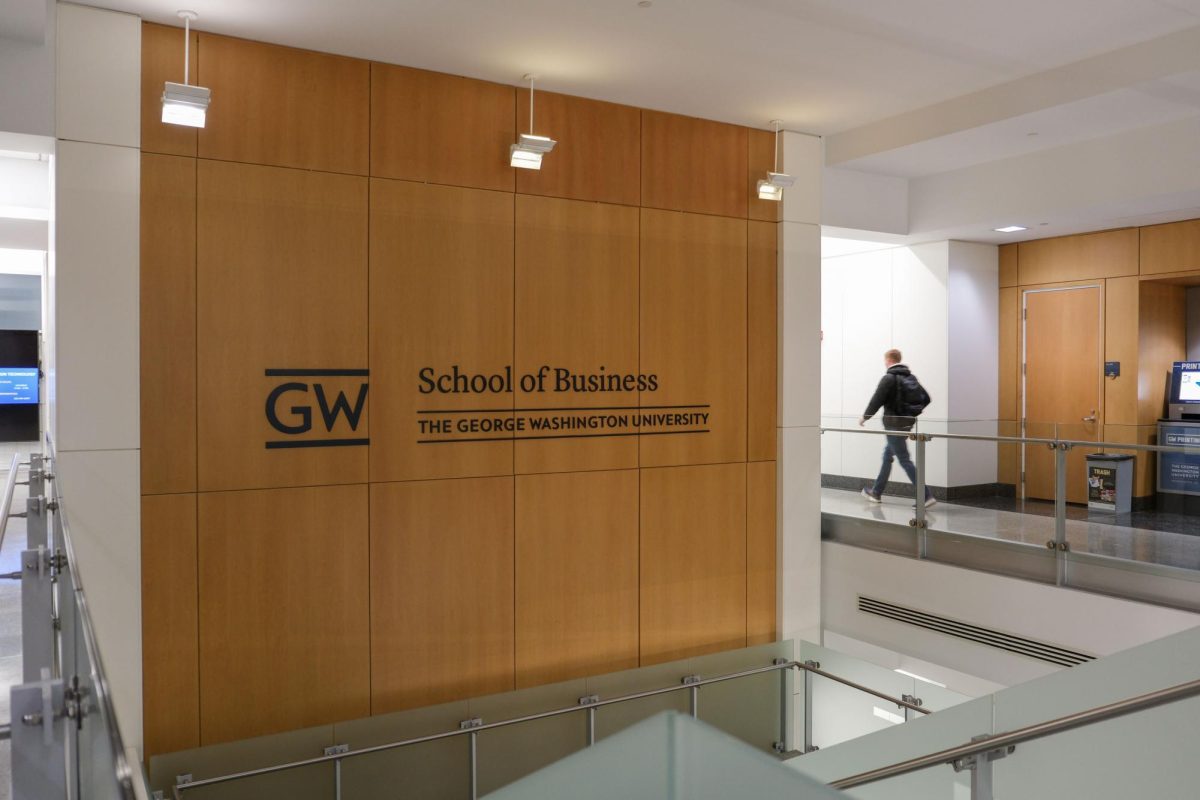Turnout among 18 to 29-year-old voters increased for the second cycle in a row, according to a nonpartisan group affiliated with GW.
Election-day exit polls helped determine a 20 percent spike in turnout in the organization’s findings last week. Young Voter Strategies, which took a comprehensive look into the youth vote, is the largest nonpartisan movement to register young voters in America. GW’s Graduate School of Political Management sponsors the group, which conducts research on young-adult voting.
The number of young voters increased from 8 million to 10 million in this year’s midterm elections compared to the 2002 cycle, the GW group said. The share of the youth vote out of all votes Tuesday rose by about 2 percent, which means that the increase in youth turnout was higher than the overall increase in turnout.
“What we saw on Tuesday was a positive sign in democracy,” said Kathleen Barr, spokesperson for Young Voter Strategies. “The more people that vote, the better.”
The organization said youth turnout may have increased because many races were close and overall competitiveness was high. Barr said her organization was able to double registrations and votes in targeted precincts, and that nonpartisan committees spent almost $5 million on youth mobilization efforts.
Young Voter Strategies used many methods along with 15 partner groups to actively augment the youth voter turnout nationwide. The largest of the partners, the Student Public Interest Research Groups, registered 75,000 college students on more than 80 campuses.
“They used tried-and-true tactics like going door to door in dorms, registering in campus quads and doing classroom presentations,” Barr said.
Another partner – Women’s Voices, Women’s Vote – registered 33,000 young women by mailing “Happy Birthday” cards with voter registration forms to girls turning 18. The organization used celebrity endorsements, including actresses Jennifer Aniston and Helen Hunt.
After this past election, which had an unprecedented amount of close races, many experts predict there will be a new focus on the young voter in future campaigns.
“The young voters are getting more and more attention from both parties,” Barr said. “By 2015, Generation Y will be one-third of the electorate, so they have to reach out to them now.”
Barr said the increase in voter participation for young voters will probably result in more attention to the issues specific to the age group.
“Political parties need to take a hard look at their youth outlook strategies, if they even have any, because the young vote is going to be increasingly important. I won’t be surprised when we see a bigger emphasis on the issues that college kids care about in the future.”
Both the GW College Democrats and the College Republicans recognized the importance of the youth vote for their parties and encouraged their members to register and obtain absentee ballots.
Sean Smith, president of the College Democrats, led a youth voting effort in his organization.
“We utilized our membership database to send state-specific e-mails to our members reminding them to file their absentee ballot request,” Smith said. He added that a greater focus on young voters could shape the national agenda.
“As our generation continues to assert itself in the political world, politicians will increasingly turns towards the greater world and national issues our generation is concerned with such as the national debt, our nation’s oil dependence and the future stability of the nation’s entitlement programs,” Smith said.
Peter Glessing, press secretary of the College Republicans, said his organization was involved in getting college students to vote.
“We encouraged all of our members to obtain their absentee ballots and offered assistance for those who needed help getting one,” Glessing said. “We put a particular focus on our freshmen because most of them are first-time voters.”
Glessing said three Republican campaigns in Minnesota contacted him to make sure that he had requested his absentee ballot.
“I believe you’ll see candidates’ campaigns put forth a stronger effort to find the voters who are at college as more young people vote,” he said. “Ultimately, younger voters – whether Republican, Democrat or independent – understand that the decisions they make now will affect the future of our nation.”
Freshman Drew Archer, who voted last Tuesday, said tight races in recent years have contributed to higher youth turnout.
“I think our generation is becoming more engaged in the political process,” Archer said. “With all of the close elections in the recent past, young people feel that they can make a difference.”
-David Ceasar contributed to this report.






